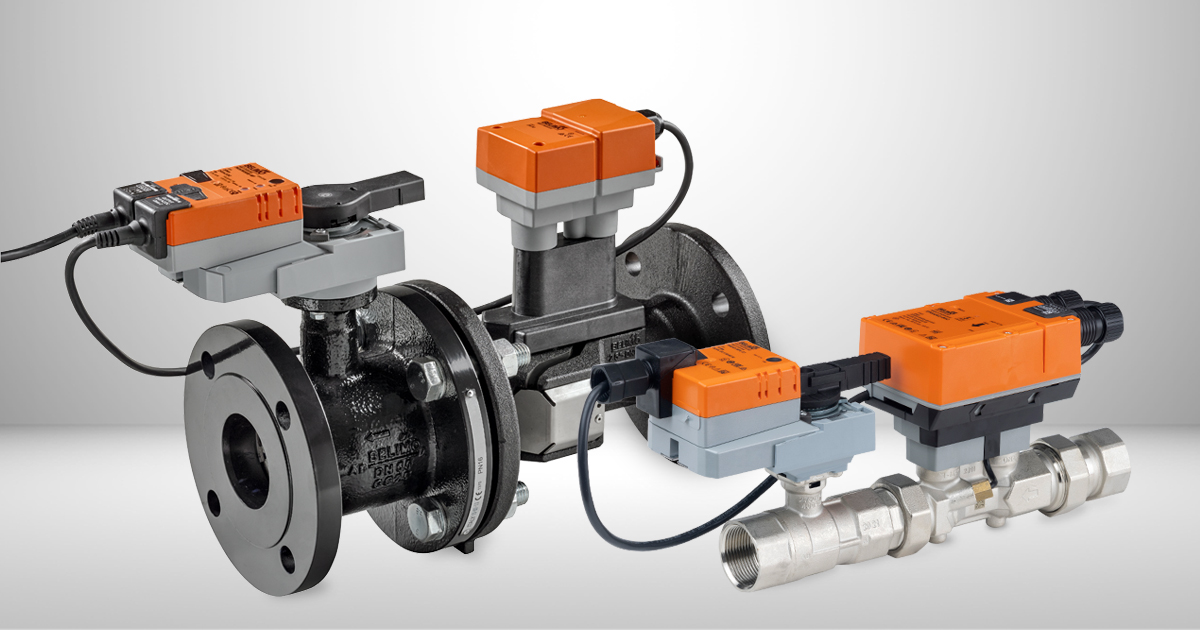Addressing Misconceptions About Controllability and Electronic PI Valves
Pressure Independent Valves (PIVs) are indispensable in modern HVAC systems where flow control is a key requirement. These valves effectively maintain consistent flows regardless of pressure fluctuations, leading to improved energy efficiency and occupant comfort. There are two main types of PIVs: Electronic Pressure Independent Valves (EPIVs) and Mechanical Pressure Independent Valves (MPIVs). Both types have their unique strengths and applications, and each have their place in the industry. This article aims to highlight the merits of both types of PIVs, and to dispel some common misconceptions.
Comparing MPIVs and EPIVs
MPIVs have earned their reputation for being cost-effective and having a small physical footprint, particularly for use in smaller line size applications with lower flows. Due to their mechanical, spring-regulated design, MPIVs can respond to changes in pressure instantaneously, offering precise control. They are a popular choice for zone-level applications, and can often deliver the customer a superior, pressure independent solution for about the same that a pressure dependent system would cost. This is due to savings on equipment and labor costs for circuit setters, which are not required in pressure independent systems as they are in pressure dependent designs.
On the other hand, EPIVs bring their own set of advantages to the table. A Belimo EPIV incorporates an ultrasonic flow sensor for real-time, accurate flow measurement, and a temperature sensor that is integrated into the flow body, allowing for fluid temperature measurement and flow measurement compensation based on glycol concentration. They remain pressure independent at a pressure drop as low as 1 PSID (most MPIVs require about 5 PSID), providing pressure-independent functionality even at a minimal load. PIVs are also highly compatible with differential pressure/variable frequency drive (VFD) reset strategies, responding proactively to any disturbances. EPIVs are a robust solution for larger line size applications, where size, weight and cost quickly become an issue for MPIVs.
Testing the EPIV Under Extreme Pressure Conditions
Despite their advantages, a common argument suggests that EPIVs struggle to maintain control in low flow scenarios when subjected to high differential pressures. Critics argue that EPIVs lack the 'infinite valve authority' found in MPIVs since there is no regulator, and that the control valve would have to accept the full pressure drop.
To address this misconception, a series of rigorous tests were conducted on the Belimo EPIV to evaluate its performance under various conditions. The tests involved a 2” EPIV exposed to pressure drops up to 50 PSID. Under normal conditions, control valves typically operate within a differential pressure range of 3 to 7 PSID, hence this test was intended to push the EPIV’s operational limits.

As shown in Figure 1, a 2” valve with a maximum flow capacity of 76 gallons per minute (GPM) was used. The control parameters were set to maintain the flow at 5% of the maximum capacity, equivalent to 3.8 GPM, and then at 1% or 0.76 GPM (Left Y-Axis).
Next, the pressure conditions were altered, with the valve subjected to pressure changes at levels of 5, 25, and 50 PSID, providing a diverse range of operational conditions (yellow line, follows Right Y-Axis).

In Figure 2, the orange line on the graph corresponds to the flow rate as measured by an external flow meter (aligned with the Left Y-Axis). Observing the graph, it is apparent that when the differential pressure surges from 5 to 25 PSID, there's a temporary increase in flow rate. However, this deviation is promptly corrected in less than one minute (time being illustrated on the X-Axis).
Simultaneously, the blue line represents the position of the actuator, which can also be understood as a measure of the valve's opening (depicted on the Right Y-Axis). During instances of pressure spikes, the actuator deftly modulates to decrease the flow, preventing any abrupt disturbances to the hydronic system.

In Figure 3, we observe a similar pattern as the pressure elevates to 50 PSID. It's important to note that despite this high-pressure differential scenario, the valve adeptly maintains control over the flow at 3.8 GPM.

As shown in Figure 4, when the pressure dips back from 50 PSID to 5 PSID, the flow command is minimized to just 1%. The actual measured flow very closely mirrors the set command, underlining the precision control offered by the EPIV, even in variable pressure conditions.

In Figure 5, as the pressure experiences a surge to 25 PSID, the flow momentarily rises, but swiftly readjusts back to the intended 0.76 GPM within a minute.

Finally, in Figure 6, under the substantial pressure of 50 PSID, the flow ascends towards 1 GPM, with the valve continuing to maintain this level. The modest change of around 0.25 GPM for this 2" valve is within the range of its control dead band, meaning no adjustment to the valve position was made. However, the valve manages to maintain control at approximately 1 GPM despite a substantial 50 PSID pressure fluctuation. This unequivocally challenges any speculation suggesting that the absence of a regulator might make this technology susceptible to valve authority influence.
Conclusion:
These findings underline the resilience and versatility of EPIVs in managing low flows, even under substantial pressure drops. The tests confirm that EPIVs can deliver robust performance, even under extreme conditions. This, however, does not make MPIVs obsolete, as they may be the best option in terms of price and size, particularly in zone-level applications.
Are you looking for HVAC training? Belimo offers unlimited access to a library of high-quality, current, and engaging HVAC video tutorials from industry experts.

